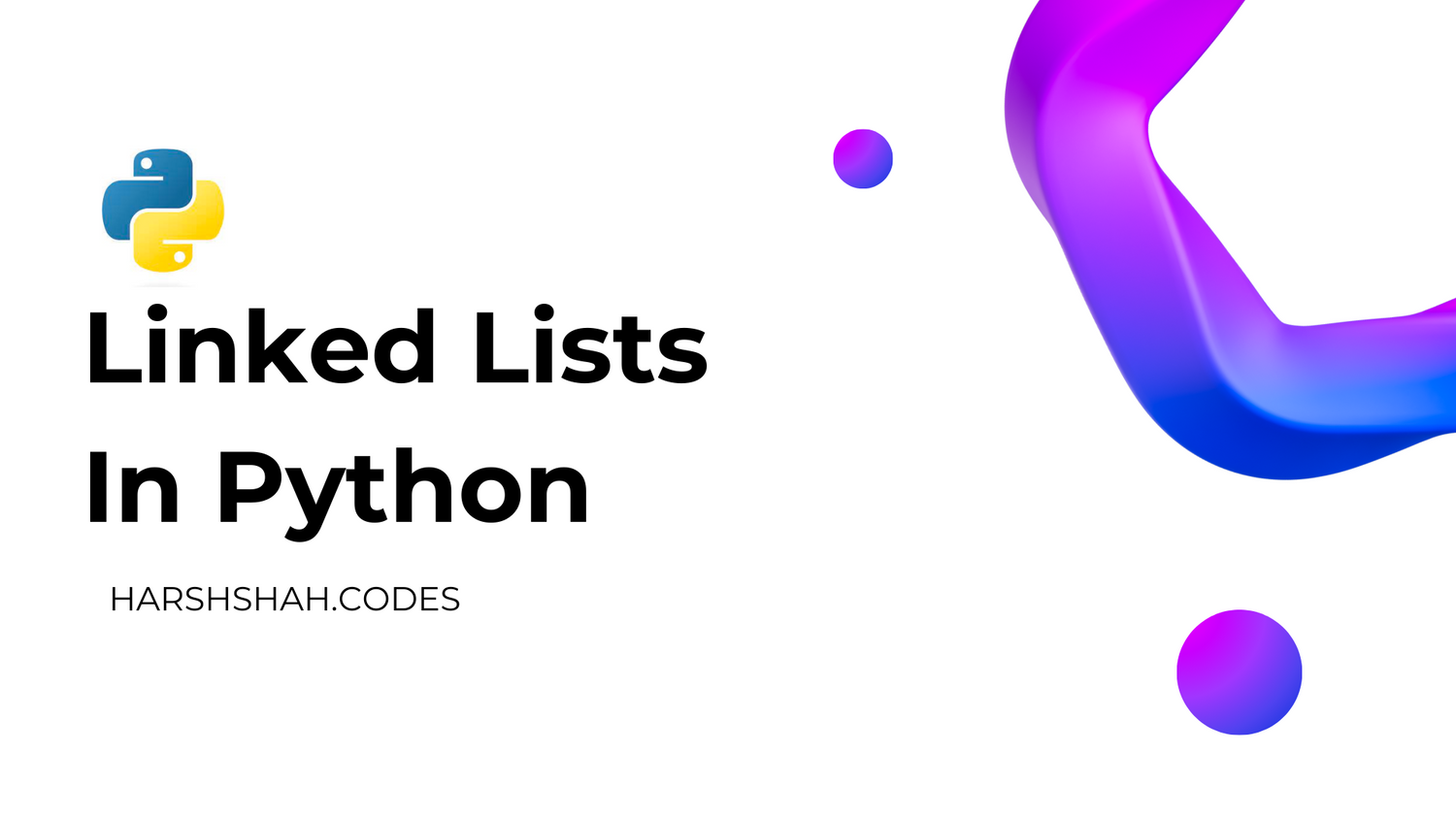
Harsh Shah
Linked Lists In Python
Table of contents
- What are Linked Lists?
- Implementing a Linked List in Python
- Essential Functions for Operating on Linked Lists:
- Insertion:
- Deletion (Assignment):
- Searching (Assignment):
- Traversal (Assignment):
In the realm of data structures, Linked Lists stand out as versatile workhorses, offering dynamic solutions for various data storage and manipulation needs. If you're delving into the world of Python programming, understanding Linked Lists is a crucial step. This blog serves as your comprehensive guide, exploring the concept, implementation, and common functions in Python.
What are Linked Lists?
Imagine a train with each carriage holding a piece of data (a node) and connected to the next carriage (another node) via a link. This analogy perfectly captures the essence of a Linked List. Unlike arrays, where elements reside in contiguous memory locations, Linked Lists store data in nodes scattered across memory. Each node houses the data and a reference (link) to the next node in the chain, forming a flexible sequence.
Implementing a Linked List in Python
While Python doesn't have a built-in Linked List structure, fear not! We can easily create one using classes:
class Node:
def __init__(self, data):
self.data = data
self.next = None
class LinkedList:
def __init__(self, initial_head):
self.head = initial_head
def insert_at_beginning(self, data):
new_node = Node(data)
new_node.next = self.head
self.head = new_node
def insert_at_end(self, data):
new_node = Node(data)
if self.head is None:
self.head = new_node
return
current = self.head
while current.next:
current = current.next
current.next = new_node
def print_list(self):
current = self.head
while current.next != None:
print(current.data, end=" ")
current = current.next
# ... other functions like deletion, searching, etc.Essential Functions for Operating on Linked Lists:
Insertion:
- insert_at_beginning(data): Adds a new node at the beginning of the list.
- insert_at_end(data): Adds a new node at the end of the list.
- insert_after(prev_node, data): Inserts a new node after a specified node.
Deletion (Assignment):
- delete_at_beginning(): Removes the node at the beginning of the list.
- delete_at_end(): Removes the node at the end of the list.
- delete_after(prev_node): Removes the node after a specified node.
Searching (Assignment):
- search(data): Traverses the list to find a node with the given data.
Traversal (Assignment):
- print_list(): Iterates through the list and prints the data of each node.
Leveraging Linked Lists in Real-World Scenarios:
Linked Lists shine in situations where memory efficiency and frequent insertions/deletions are paramount. Here are some practical applications:
- Undo/redo functionality in software: Linked Lists enable efficient tracking of past states, allowing users to easily revert or redo actions.
- Implementing music playlists: Adding, removing, and rearranging songs is a breeze with Linked Lists, ensuring smooth playback transitions.
- Dynamically allocating memory: In resource-constrained environments, Linked Lists offer flexibility in memory usage compared to fixed-size arrays.
Beyond the Basics:
While this blog provides a solid foundation, the world of Linked Lists is vast. Explore advanced concepts like:
- Circular Linked Lists: Nodes form a circular chain, where the last node points back to the first.
- Doubly Linked Lists: Each node has links to both the previous and next nodes, enabling bi-directional traversal.
By mastering Linked Lists, you'll unlock a powerful tool for tackling diverse data management challenges in your Python projects. Remember, practice makes perfect, so experiment, create, and have fun with this dynamic data structure!
Subscribe to our newsletter

Harsh Shah
I write articles on web dev and more specifically on react and next js.
